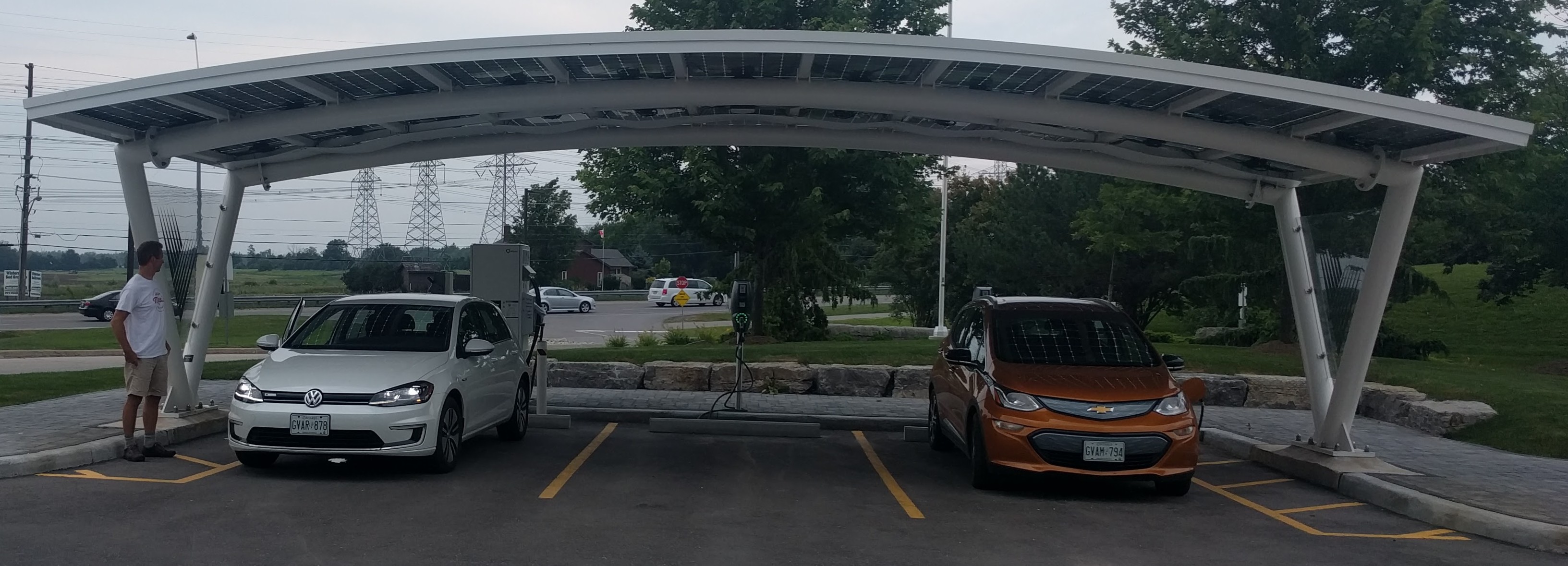
What if I told you that from now on, in order to fill up your gas tank you had to pay $5 to put the nozzle in, and then pay per minute to get some random flow of gas. You have no control over how fast or slowly the gas comes out of the nozzle, but when your time is up, if your tank is not full yet, you will have to put in another $5 to get more minutes of flow, and repeat until full. Sounds crazy, right?! Well, this is exactly what we have at the worst of the EV chargers. Over the summer we carefully logged our travels in our new e-Golf, and discovered that road-tripping costs at least as much in an EV as it does in a fossil. In fact, gas costs could actually be cheaper, depending on the chargers you use, and the time savings per fill-up are substantial.
How can that be true, you ask? Everyone knows it only costs a few dollars to plug into a public charger, where it costs $40 or $50 whenever you go to the gas pumps. Well, if you are like me, and amps and kilowatts are a foreign language, it’s easy to be fooled into a false sense of economy.
There is no standardization in the current charging infrastructure, so sometimes you can charge your car for free, sometimes you are quoted an hourly rate, sometimes a fixed fee, and sometimes a combination, such as a connection fee and a per minute rate. Is that confusing enough? It gets worse, because even if you could do the math to compare those rates, the big unknown is how much power the individual charger will put out (this is the technical part about amps – refer to Matthew’s recent post “Ontario’s EV Program, a User’s Review” if you want a full explanation of that).
For our e-Golf’s efficiency rating of 17.4KWh/100kms, it takes over an hour, and costs more than double the price of gas to get enough KWh’s to drive 100kms! But I needed an app to do that calculation. If only charging was sold by the kWh – then all I would need to do is replace litres with kWh’s in the typical fuel efficiency equation of “L/100kms” to make my comparison.

We did a calculation comparing the different charging networks encountered on our trips, and this is what we found when we compared apples to apples. Putting everything into the same units, the cost to travel 100 kilometres, and comparing that to the cost of the gas required to cover the same distance in an ICE vehicle, the costs are all over the place from free right up to “Ouch”. Because of the wild west nature of EV charging, without careful planning and some inside knowledge EV charging can cost way more per kilometre than gas! And to add insult to injury, it takes a lot more time to fill up at a charger than at a gas pump.
To be clear, if you mainly charge at home, the amount added to your electricity bill is definitely way less than the cost of gas. And if you only take a few road trips a year, this is probably not really going to worry you that much. But for anyone who does not have access to a home charger, such as out-of-town travellers, and local condo and apartment dwellers, who must rely on public chargers, the economics of charging an EV are way out of line.
The Electric Vehicle Chargers Ontario (EVCO) program that is providing funds for Level 3 chargers across the province, failed to provide clear specifications for the output, so many of these are way more expensive than gas. The City of Ottawa’s proposed EV Charger Policy risks falling into the same category if it follows the same path. This is counter-productive to all their other programs aimed at promoting EV’s as a more environmentally sustainable mode of transportation. Never mind range anxiety, who would buy an EV if they knew that charging it while on the road might cost two or three times as much as gas, and add two or three hours to the trip?
It’s easy to see how consumers could misunderstand the cost of public charging, and I am afraid that the policy makers are no more clear on the concept than the rest of us. They need to identify their target markets, and provide reasonably priced charging options for each market segment in order to make EV ownership viable for all. The way things stand, city dwellers who do not have access to their own home charger, and tourists or long-distance travellers, both face a serious disincentive to EV ownership. And that is the untold story of EV public charging in Ontario. Who knew?

Visits: 314
